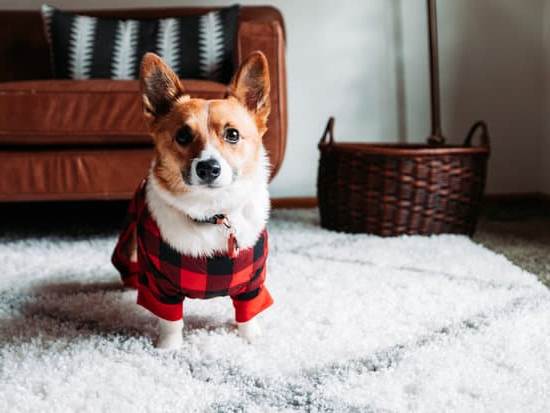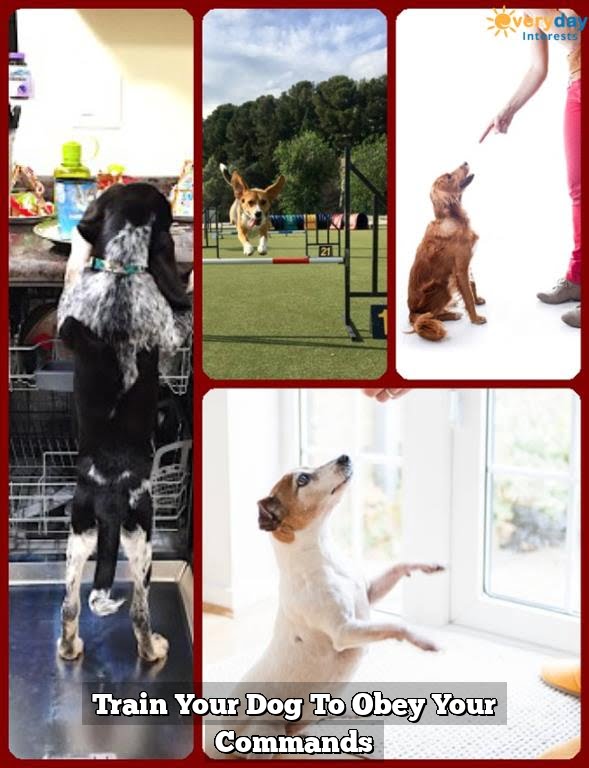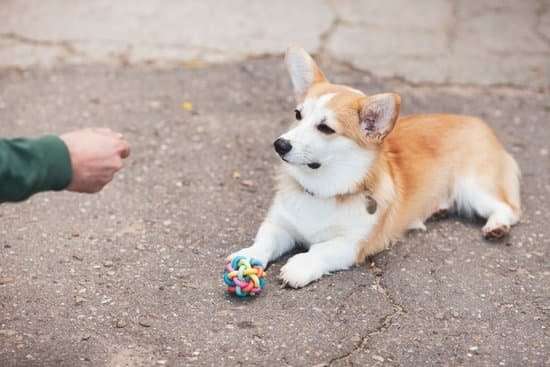Are you looking to enhance the bond with your furry companion and impress your friends with their tricks? Learn how to trick train your dog effectively in this article. Trick training goes beyond just entertainment; it strengthens the relationship between you and your dog, provides mental stimulation, and boosts their overall confidence.
Establishing trust and effective communication is crucial when delving into trick training with your dog. By building a solid foundation based on trust, respect, and clear communication, you create a conducive environment for learning. Understanding your dog’s motivation is key to unlocking their potential in trick training. Whether it’s treats, toys, or verbal praise, knowing what drives them will make the teaching process more effective.
As you embark on this journey of trick training, start by teaching basic commands as fundamental building blocks for more advanced tricks. These commands lay the groundwork for more complex behaviors and serve as a starting point for further training.
Remember that each dog is unique, so choosing tricks that align with their personality and abilities is essential for successful training sessions. By tailoring the tricks to suit your dog’s strengths and preferences, you increase their engagement and enjoyment in the process.
Setting the Right Foundation
Building a strong foundation based on trust and clear communication is essential when it comes to trick training your dog. Dogs thrive in environments where they feel secure and understood, making it easier for them to engage in learning new tricks. To establish this foundation, you must first ensure that your dog feels safe and comfortable with you as their trainer.
One effective way to build trust with your dog is through positive reinforcement techniques. By rewarding good behavior with treats, praise, or playtime, you create a positive association that strengthens the bond between you and your furry friend. Consistency is key in reinforcing this trust – make sure to follow through with rewards every time your dog successfully completes a task during training sessions.
Communication also plays a crucial role in setting the right foundation for trick training. Dogs rely heavily on body language and tone of voice to understand commands and cues from their trainers. It is important to be clear and consistent in your communication signals so that your dog can easily interpret what is expected of them. By establishing trust and effective communication, you are laying the groundwork for a successful trick training journey with your canine companion.
| Trust Building Techniques | Examples |
|---|---|
| Positive Reinforcement | Rewards such as treats, praise, or playtime |
| Consistency | Follow through with rewards for successful tasks |
Identifying Your Dog’s Motivation
Understanding Your Dog’s Individual Motivation
Every dog is unique, with their own set of preferences and motivations. Before you start trick training your furry friend, take the time to observe and understand what drives them. Some dogs may be motivated by food treats, while others may respond better to praise and playtime. By identifying what motivates your dog, you can tailor your training approach to suit their needs and maximize their learning potential.
Experimenting With Rewards
To figure out what truly motivates your dog, it may require some experimentation with different types of rewards. Start by offering a variety of treats such as small pieces of chicken, cheese, or even their favorite toy as a reward for performing a trick correctly.
Observe which rewards elicit the most enthusiastic responses from your dog and use those as incentives during training sessions. Remember, finding the right motivation is crucial in keeping your dog engaged and excited about learning new tricks.
Utilizing Positive Reinforcement Techniques
Once you have identified what motivates your dog, incorporate positive reinforcement techniques into your trick training sessions. Rewarding good behavior with treats or praise reinforces the desired actions and encourages your dog to continue performing tricks.
By using positive reinforcement effectively, you create a fun and rewarding experience for your pet while strengthening the bond between you. Remember, patience and consistency are key when it comes to understanding your dog’s motivation and successfully trick training them to learn new behaviors effectively.
Basic Commands
Teaching your dog basic commands is an essential step in trick training as it sets the foundation for more advanced tricks. Before moving on to flashy and impressive feats, it is important to ensure that your dog understands and can successfully execute basic commands such as sit, stay, come, and heel. These commands not only help in everyday situations but also serve as building blocks for more complex tricks.
To start teaching your dog basic commands, it is crucial to use positive reinforcement techniques. Rewarding your dog with treats, praise, or playtime when they successfully follow a command will encourage them to continue learning. Consistency is key during this process – be sure to use the same verbal cues and gestures each time you give a command to avoid confusion.
One effective way of incorporating basic commands into trick training is by making them a part of your daily routine. For example, you can ask your dog to sit before meal times or go on walks. This not only reinforces their understanding of the command but also integrates obedience training into their everyday life. By establishing a strong foundation in basic commands, you are paving the way for successful trick training with your furry companion.
| Benefits of Teaching Basic Commands | Importance of Positive Reinforcement |
|---|---|
| Enhances communication between you and your dog | Motivates dogs to learn and follow commands |
| Improves obedience and overall behavior | Strengthens the bond between you and your dog |
| Sets the stage for successful trick training | Builds confidence in dogs through rewards |
Choosing Tricks Wisely
When it comes to trick training your dog, one of the key factors to consider is selecting the right tricks based on your dog’s personality and abilities. Not all dogs are the same, so it’s important to choose tricks that align with their natural tendencies and strengths. By tailoring the tricks to suit your dog’s unique characteristics, you can ensure a more successful and enjoyable training experience.
To start, observe your dog’s behaviors and interests to get a sense of what they may excel at or enjoy. For example, if your dog loves jumping or has a strong prey drive, agility-based tricks like jumping through hoops or fetching specific items may be a good fit. On the other hand, if your dog is more food-motivated or enjoys problem-solving, tricks involving puzzles or food dispensing toys could be ideal.
It’s also essential to consider your dog’s physical capabilities when choosing tricks. A small breed may struggle with high jumps or complex maneuvers that larger breeds can easily perform.
By keeping their size and physical limitations in mind, you can prevent frustration and potential injury during training sessions. Remember, trick training should be fun and rewarding for both you and your furry companion, so selecting tricks that cater to their strengths will ultimately lead to a more positive learning experience.
Positive Reinforcement
Choosing the Right Rewards
When it comes to positive reinforcement in trick training, choosing the right rewards is crucial. Treats are often the go-to reward for dogs, but it’s important to select treats that are highly appealing to your dog.
Whether it’s small pieces of cooked chicken, cheese, or commercial dog treats, find what truly excites your dog and use those as rewards during training sessions. Additionally, incorporating verbal praise, petting, or playtime can also be effective forms of reward, depending on what motivates your dog the most.
Timing Is Key
Incorporating rewards at the right time during trick training is equally important. The timing of the reward should be immediate so that your dog associates the reward with the desired behavior. For instance, if you’re teaching your dog to sit on command, make sure to give them a treat as soon as their bottom touches the ground.
This immediate reinforcement helps solidify the connection between the behavior and the reward in your dog’s mind, making it more likely for them to repeat that behavior in the future. Remember, consistency in rewarding desired behaviors is key when using positive reinforcement to train your dog on new tricks.
By utilizing rewards and encouragement effectively in trick training, you can create a positive learning experience for your dog while strengthening your bond with them. Remember to choose enticing rewards, deliver them promptly after desired behaviors, and maintain consistency throughout the training process. With patience and dedication, you’ll be amazed at how quickly your furry friend picks up new tricks and enjoys showing off their skills.
Patience and Consistency
When it comes to trick training your dog, patience and consistency are two of the most critical factors in ensuring success. Dogs, like humans, learn at their own pace, and it is essential to give them the time they need to grasp new tricks. Consistency in your training methods and routines will also help reinforce what they have learned and prevent confusion. By practicing patience and consistency, you can create a positive learning experience for your furry friend.
To effectively incorporate patience into your trick training sessions, it is crucial to understand that every dog is different. Some dogs may pick up on tricks quickly, while others may take more time to learn. It is essential not to rush the process or become frustrated if progress seems slow. By remaining patient and giving your dog the opportunity to understand and practice each trick at their own pace, you are setting them up for success.
Additionally, consistency plays a vital role in reinforcing the behaviors you want to see in your dog. By consistently using the same cues, commands, and rewards during training sessions, you are helping your dog understand what is expected of them.
Creating a routine that includes regular training sessions will also help solidify their understanding of each trick. Remember that consistency requires commitment from you as well – so be sure to dedicate time each day to work on trick training with your dog.
Some helpful tips for incorporating patience and consistency into your trick training sessions include:
- Setting realistic expectations based on your dog’s individual abilities
- Using clear and consistent cues or commands for each trick
- Reinforcing positive behaviors with rewards such as treats or praise
- Practicing regularly but keeping training sessions short and engaging
- Remaining calm and composed even when faced with challenges or setbacks
By following these principles of patience and consistency, you can create a rewarding experience for both you and your dog during trick training. Remember that every small achievement should be celebrated, as it will boost your dog’s confidence and strengthen your bond with them. With dedication, understanding, and a positive attitude, you can truly enjoy the journey of teaching your furry companion new tricks.
Troubleshooting Common Challenges
Training your dog to perform tricks can be a rewarding experience, but it’s not always smooth sailing. Just like humans, dogs can have their off days or struggle with certain aspects of learning new behaviors. This is where troubleshooting common challenges comes in handy.
One of the most common roadblocks in trick training is when your dog seems disinterested or unmotivated to learn. In this situation, it’s important to reassess the tricks you are teaching and ensure they align with your dog’s interests and abilities.
Another challenge you may encounter is when your dog becomes easily distracted during training sessions. This can make it difficult for them to focus on learning new tricks and following commands. To address this issue, try conducting training sessions in a quiet environment free from distractions. Additionally, break down the trick into smaller steps and gradually increase the level of difficulty once your dog has mastered each component.
Furthermore, some dogs may exhibit stubborn behavior or resistance when asked to perform certain tricks. If you find yourself faced with this challenge, avoid using force or punishment as it can damage the bond between you and your furry friend.
Instead, use positive reinforcement techniques such as treats, praise, and toys to encourage them to engage in the training process willingly. Remember, patience and consistency are key when overcoming challenges in trick training – celebrate small victories along the way and enjoy the journey of bonding with your canine companion through these fun activities.
Advanced Tricks
Training your dog to perform advanced tricks can be a rewarding and fulfilling experience for both you and your furry companion. It allows you to further strengthen the bond between you and your dog while also showcasing their intelligence and abilities. To take your dog’s training to the next level with impressive feats, consider the following tips:
- Set Clear Goals: Before embarking on teaching advanced tricks, determine what specific feats you would like your dog to learn. Whether it’s complex tasks like playing dead or jumping through hoops, having clear goals will help guide your training sessions.
- Break it Down: Just like with basic commands, breaking down advanced tricks into smaller steps can make them more manageable for your dog to learn. By gradually introducing each component of the trick, you can build upon their skills and gradually piece together the full sequence.
- Practice Regularly: Consistent practice is key when teaching advanced tricks to your dog. Make sure to set aside time each day for training sessions, keeping them short but frequent to maintain their interest and progress. Remember that repetition is essential for mastery.
When implementing these strategies along with positive reinforcement techniques, you’ll be amazed at how quickly your dog can pick up on complex tricks. By celebrating their successes and progress along the way, you’ll not only showcase their talents but also strengthen the special bond between you and your four-legged friend through trick training.
Conclusion
In conclusion, trick training your dog is not just about teaching them fun and impressive tricks but also about building a strong bond and deepening your relationship with your furry companion.
By understanding the benefits of trick training, setting the right foundation of trust and communication, identifying their motivation, teaching essential commands, choosing tricks wisely, utilizing positive reinforcement, practicing patience and consistency, overcoming common challenges, and eventually progressing to advanced tricks, you are not only enhancing their skills but also creating moments of joy and connection.
Through trick training, you can witness firsthand the intelligence and capabilities of your dog as they master new tricks and tasks. It allows you to tap into their natural instincts and abilities while providing mental stimulation and physical exercise. Moreover, trick training can boost their confidence and improve their behavior by keeping them mentally engaged and fulfilled.
Ultimately, trick training is a rewarding experience for both you and your dog. It is a journey of growth, learning, bonding, and most importantly, having fun together. So grab some treats, be patient yet consistent in your approach, celebrate every small milestone achieved by your furry friend, and enjoy the journey of discovering just how much you can achieve when you learn how to trick train your dog.
Frequently Asked Questions
What Is the Easiest Trick to Teach Your Dog?
Teaching your dog to sit is often considered one of the easiest tricks to start with. It’s a simple command that can be easily rewarded and reinforced. With consistency and patience, most dogs can pick up this trick fairly quickly.
Is Trick Training Good for Dogs?
Trick training can be very beneficial for dogs. It helps stimulate their minds, provides mental enrichment, strengthens the bond between the owner and the dog, and gives them a sense of accomplishment. Additionally, it can help improve communication between the dog and the owner.
What Is the Hardest Command to Teach a Dog?
One of the hardest commands to teach a dog is “stay.” This command requires a lot of self-control from the dog as they need to resist their natural instinct to follow their owner or move around. It also requires good timing and patience from the owner to successfully teach this command.

Welcome to the blog! I am a professional dog trainer and have been working with dogs for many years. In this blog, I will be discussing various topics related to dog training, including tips, tricks, and advice. I hope you find this information helpful and informative. Thanks for reading!





